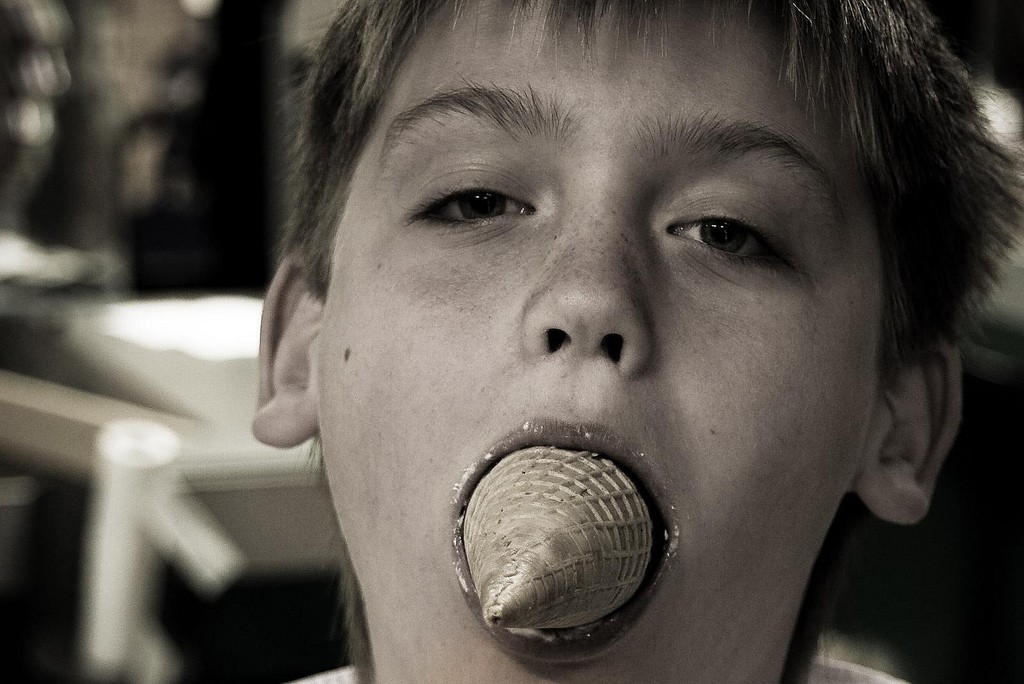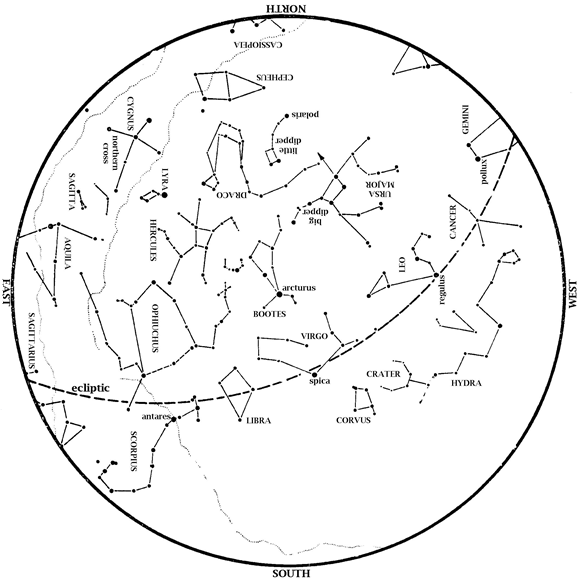It’s getting to that time of year when it’s so hot and yucky outside that everything cold is better.
It’s also a time for telling kids about how, when you were their age, if you wanted ice cream you had to turn a crank until your arms fell off (presumably while walking uphill to school both ways and fighting off bears…).
Here in the Houston Museum of Natural Science education department, we have tried making ice cream in a variety of ways to see what is easiest for kids, and not all ways are equal. (Pro tip: Those special ice cream-making balls they sell for kids freeze shut, and then kids are sad. Not recommended.) Our favorite way, at the end of this post, is fairly cheap and easy and fun for kids, but before we get to the instructions, let’s talk about some science.
To make ice cream, you will of course need ice. The ice is simply to lower the temperature of the cream to the freezing point, but if you just used ice alone and let it sit, you’d end up with a solid block of cream – more like an ice cube – and it would take longer to freeze. What makes ice cream special is salt and stirring.
Water freezes at 32° F, but sprinkling salt on the ice lowers the freezing/melting point of water. How, you say? In order for liquid water to freeze to solid ice, all of the water molecules have to slow down enough to connect to each other and form solid crystals. When this happens, the water loses kinetic energy due to the decrease in movement of those molecules. Because temperature is a measurement of kinetic energy, this results in a lower temperature.
The presence of salt interferes with this process. The water molecules can’t attract each other as easily because they are also attracted to the sodium and chloride ions from the salt. Mixing the salt, ice, and water together results in a temperature below the freezing point of water, which helps the cream freeze faster. The shaking or stirring helps cool the cream evenly and efficiently. In ice cream, this lower freezing point turns the fats into solids, but the water content to be almost frozen.
What about the milk, then? It is much easier to make ice cream with creamer, heavy whipping cream, or half-and-half than to use skim milk because of the higher fat content in cream. You can make ice cream with skim milk, but it is really, really, really hard to do by hand, AND you have already committed to making ice cream, so I feel like you have acknowledged the inherent risk of fat consumption that comes with making a frozen confectionery delight. Just use the full-fat stuff, and let’s all move on.
What does the fat do, anyway? Primarily the higher fat content allows for a richer, creamier texture and a more delicious flavor in your finished product. The reason for this is that when you are cooling and mixing the cream, you are also introducing air molecules to the liquid. The bits of fat in the cream add a little structure to the ice cream and trap these air molecules in the solution as it forms. This, plus the lower freezing temperature, enables you to be able to scoop the ice cream fairly easily because it allows for there to be a bit of unfrozen water in the ice cream, which stops the ice cream from becoming a solid block of ice.
If you have ever had ice cream that has grown ice crystals and gotten a bit of freezer burn, those ice crystals appeared because the unfrozen water in the ice cream had a chance to migrate a little bit when the ice cream was warmed slightly on the ride home or when it was left on a counter a little too long and then frozen again. There are things called stabilizers added to your ice cream to prevent this from happening. Most ice creams today have one of five stabilizers added to them: carob bean gum* (a type of bean from Africa), carrageenan (a type of algae), guar gum (a type of legume from India), sodium alginate (made from seaweed) or carboxymethyl cellulose (sounds scary but it’s plant-based). Often, if you read the label, you will see more than one of these in your ice cream to keep it smooth and delicious.
* Carob beans, or locust beans, are cool. They are from exotic African trees and each bean is so similar that at one point they were used as a unit of measurement for gold and silver. We still use this measurement today, but the name has changed over time to Karat.
So now that you have had a little lecture about the science of ice cream, let’s get to the delicious lab work.
Activity: ICE CREAM!!!!
Materials:
Individual serving containers of coffee creamer
Ice
Small waterproof container or quality sealable plastic sack big enough for about two or three cups of chipped ice
Salt, any variety
A dish towel to insulate your hands
Optional: Inexhaustible energy of small child-based labor
Procedure:
- Find some liquid coffee creamers in individual pots.
- Put ice in your water proof container, filling it about a third of the way. Smaller chunks of ice work better because there is more surface area, but any ice will do.
- Layer your salt on your ice. Several solid sprinkles will do, but if you are nervous about the quantity, add some extra just in case. It won’t hurt anything.
- Put your sealed creamer cup(s) in your container and then put more ice in, filling it about 2/3 of the way.
- Layer on more salt.
- Finish filling the container with ice.
- Start shaking your container. Make sure it is well sealed and that you have a firm grip on it. No one wants to be injured in an ice cream-related accident. There is no way to spin that so it sounds cool. Also, this is an excellent job for kids to help with. Put on a nice, long song or two and let them wiggle till they drop. About ten minutes will do it, but you will know when you are getting close because a frost will form on the outside of your container. If you don’t feel frost forming after a couple of minutes, add more salt. To speed this process up, start with creamer pods that have been stored in the fridge. This way, your creamer will start at about 50° F, and you won’t have to work so hard.
- After about 10 minutes of shake, shake, shaking your ice cream, dig your creamer cup out of the ice and wipe it off.
- Ta dah! You are done. Unless you want to make this tablespoon of delicious homemade ice cream into a sundae and add chocolate and banana or some jelly for more flavor.
Note: If you are thinking to yourself, “That seems like a lot of work for a tablespoon of ice cream,” well… it is. But it’s also science. So there.
If you get the liquid creamer that comes in a larger container at the grocery store, you can increase the volume of your creamer and make MORE ice cream. If you choose to do this, you will need to find a small waterproof (and I would suggest plastic) container to pour the creamer into and then a slightly larger waterproof container for all the ice and the salt. It’s the same procedure, just with a larger amount of the ingredients!














